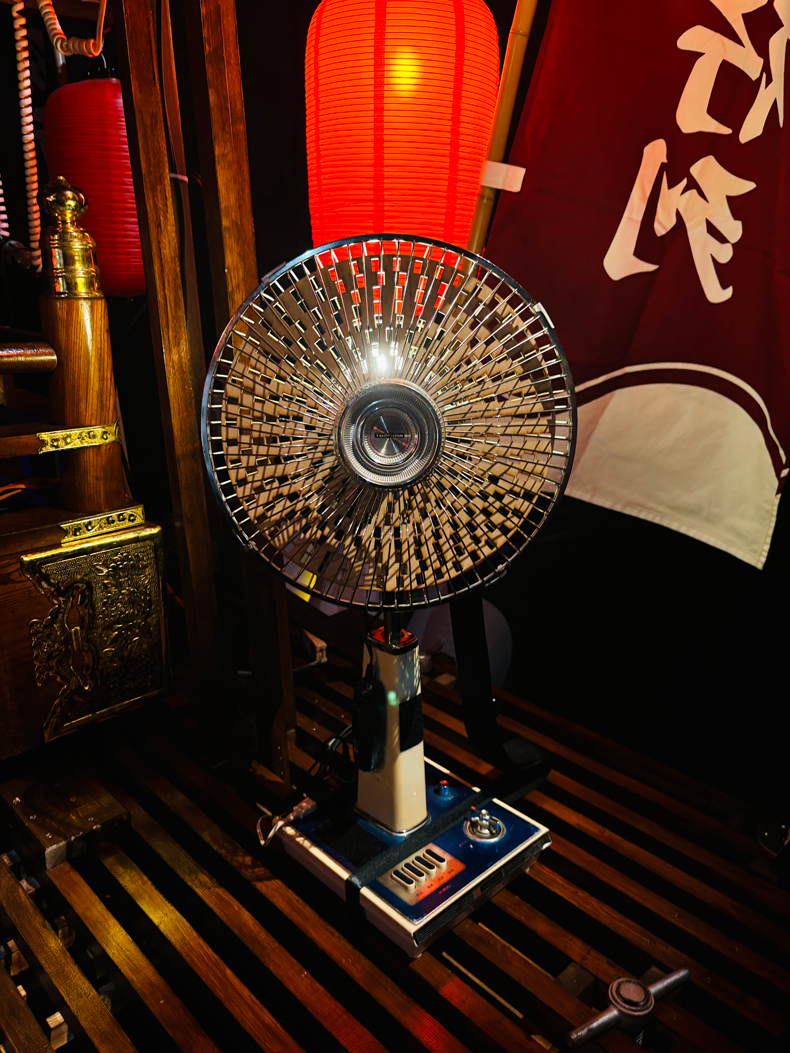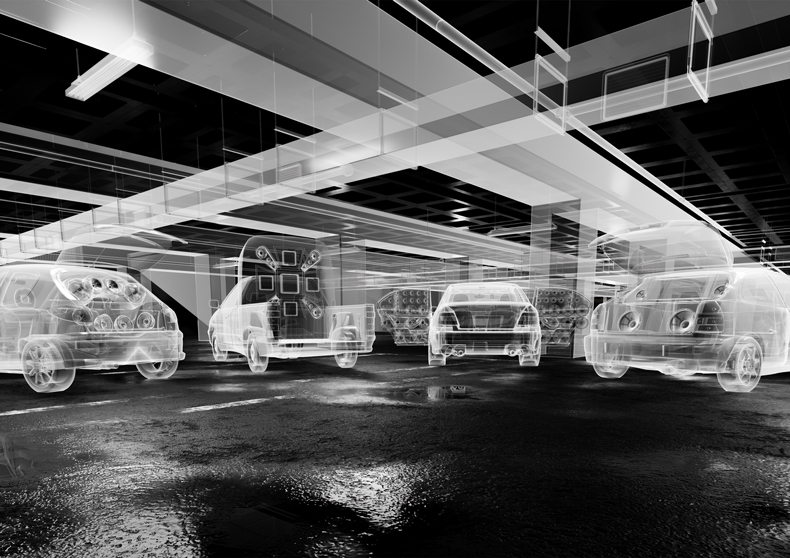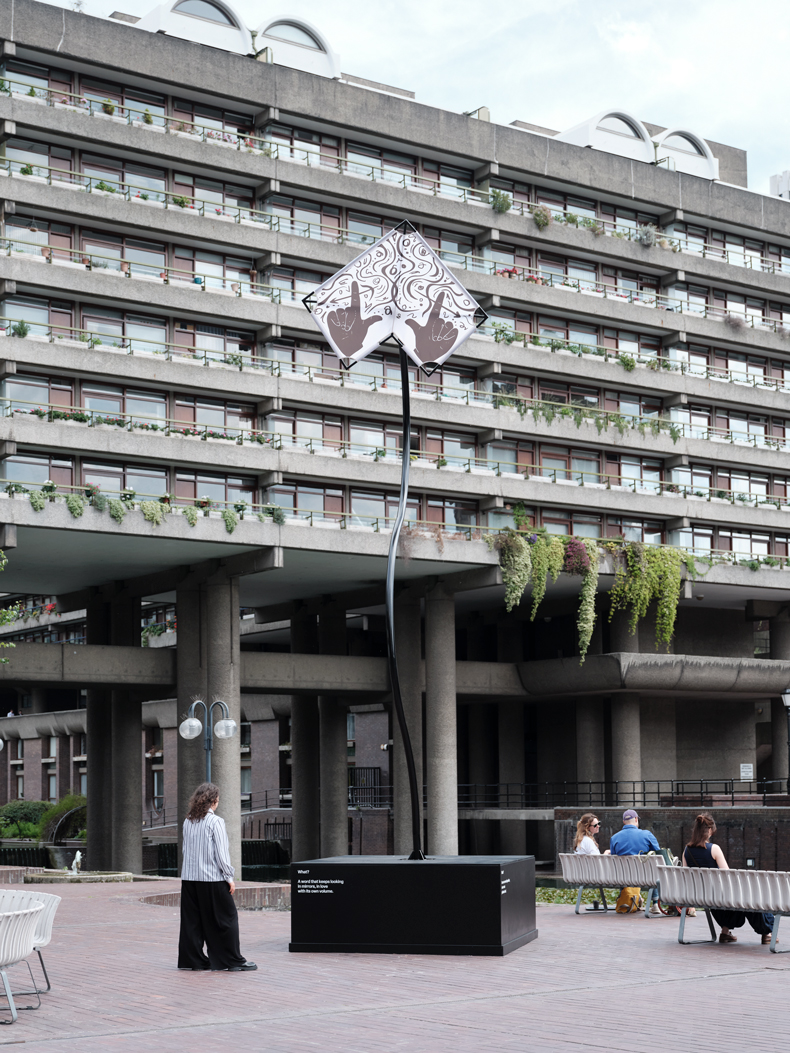The vibe at ‘Feel the Sound’, the Barbican’s new exhibition exploring the art of sound and listening, is practically evangelical. ‘Sound is a portal to infinite possibilities,’ its blurb promises visitors at the entrance. ‘When we expand the potential of listening beyond hearing it becomes a deeper experience – we can feel it, touch it, see it.’ So far, so synaesthetic. Sign me up. ‘Summon moments from the past. Forge powerful collective memories in the present. Listen to echoes from the future.’
There’s a mild sense of discord from the start: ‘Feel the Sound’ wants to blow your mind, but also to remind you what ancient news this full-body, holistic, open-ended conception of sound is. And with good reason: Plato and Aristotle debated whether humanity was bathed in the vibrations of vast celestial bodies; the harpies’ voices drove men to madness in Greek myth; the Bible tells us of trumpets shaking stone walls to pieces. This discord becomes a kind of accidental keynote as you enter the exhibition: drawing on ‘ancestral listening practices’, Evan Ifekoya’s Resonant Frequencies washes you in ambient tones that are meant to heal by resonating with the body’s natural frequencies. There’s a noise pollution problem, though – the sounds emanating from the neighbouring rooms and exhibits. A pool of water, intended to be alive with ripples patterned by these resonances, was sadly still, a yellow ‘Caution: Wet Floor’ sign guiltily straddling a puddle leaking from Ifekoya’s installation. Sad trombone.

Installation view of Electric Fan Harp (2016–) by Electronicos Fantasticos!/Ei Wada at the Barbican. Courtesy muuuse
Two rooms of playfully interactive installations follow, but technical gremlins strike again. One of Amor Muñoz’s chimeras – ‘living’ assemblages combining the mechanical principles of the hanging mobile, the puppet and the wind-chime – remains inert or comatose. Sometimes these gremlins have happily Cage-ian effects. As I sit diligently flicking small metal switches on a set of wooden boxes, each meant to control various parameters of low-level ambient noise, I become intensely aware of every background sound as I try to detect whatever changes I’m making. And then a Barbican employee arrives to put an ‘Out of Use’ sign on the boxes and I realise I have been inadvertently performing 4’33”.
The operational pieces are largely a joy. In Electric Fan Harp, Electronicos Fantasticos! combine torches, fans and speakers to translate light strobing through fan blades into a corresponding sound frequency: altering the distance and angle summons a delightful vocabulary of siren wails and harmonica-like squeals and whoops. Vibraceptional Plate by Jan St. Werner (of the electronic duo Mouse on Mars) invites you on to a large metallic platform that thrums with different trouser-shaking frequencies and pulses as you shift your weight and position. You step off weirdly alert, some obscure switch in your limbic system flicked on.

Concept image of Joyride (2025) by Temporary Pleasure. Courtesy Temporary Pleasure
Forever Frequencies, by the Domestic Data Streamers collective, feels like its creators have not read the room – although the set-up is that the room reads you. At a large console you answer questions about your earliest memories of music, your sonic preferences and an emotion you’d like to feel. From these disclosures an AI model composes a brief melody – with all the tonal variety available to a small music box – to soundtrack this requested feeling and evoke a memory it wants to help you ‘manifest’. Irked by an AI machine scraping yet more human data, I’m slightly mortified to be accidentally presented with the private wished-for memory of the visitor who’d left the console just before me. Feeling like a trespasser, I find myself trying to short-circuit the AI’s mission to give me a musical memory of a desired future by requesting the exact melody of ‘Mull of Kintyre’; it doesn’t, but congratulates itself on doing so in its short summary of its own workings.
From here, ‘Feel the Sound’ stretches out into part of the Barbican’s underground garage, a surprisingly effective gallery space. With Max Cooper’s Reflections of Being, you’re immersed in video projections on vast hanging sheets: streams of digits, words and code flow over images of natural landscapes and packed cityscapes. Seats hum with the bass of Cooper’s epic, ecstatic techno score. Joyride by Temporary Pleasure riffs on the culture of car modding, with four wrecks, each looking like Transformers caught mid-change into carnival sound systems, engaging in a staged sound-clash. It’s impressive, but I can’t help thinking of a recent day when, walking down a London street with my youngest son, I felt the air change, followed by my jeans gently vibrating, before turning round to see a car rolling down the road emitting sub-bass so loud it set off two car alarms. Similarly, the exhibition’s gestures towards the collective are well-intentioned but pale next to news reports of Liverpool fans celebrating their recent title win at Anfield so loudly it registered as a seismic event on the Richter scale.
Emerging into the concourse daylight, you are met with Raymond Antrobus’s Heightened Lyric, seven kites bearing messages in British Sign Language, ending ‘Feel the Sound’ with silence – exactly the right note. And in the quiet it occurs to me that the conveyor-belt set-up of any exhibition and its onward momentum runs counter to deep listening. The deep listening has to start when you leave.

Installation view of Heightened Lyric (2025) by Raymond Antrobus. Photo: © Thomas Adank/Barbican Centre
‘Feel the Sound’ is at the Barbican until 31 August.



 Surround-sound art finds a perfect home in Portugal
Surround-sound art finds a perfect home in Portugal










![Masterpiece [Re]discovery 2022. Photo: Ben Fisher Photography, courtesy of Masterpiece London](http://www.apollo-magazine.com/wp-content/uploads/2022/07/MPL2022_4263.jpg)
Why it’s time to stop rediscovering Eileen Gray